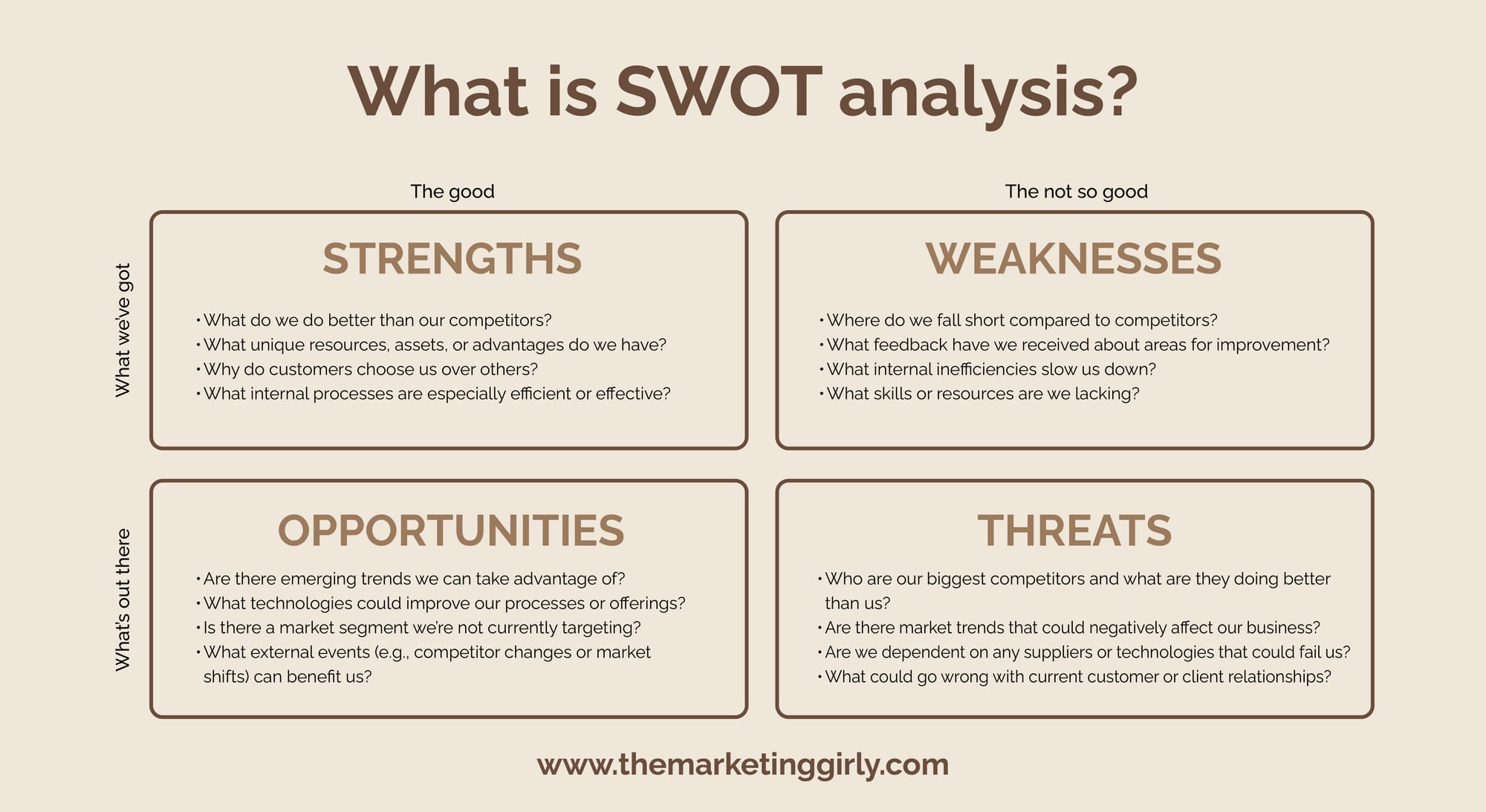How To Write Swot Analysis Of A Company
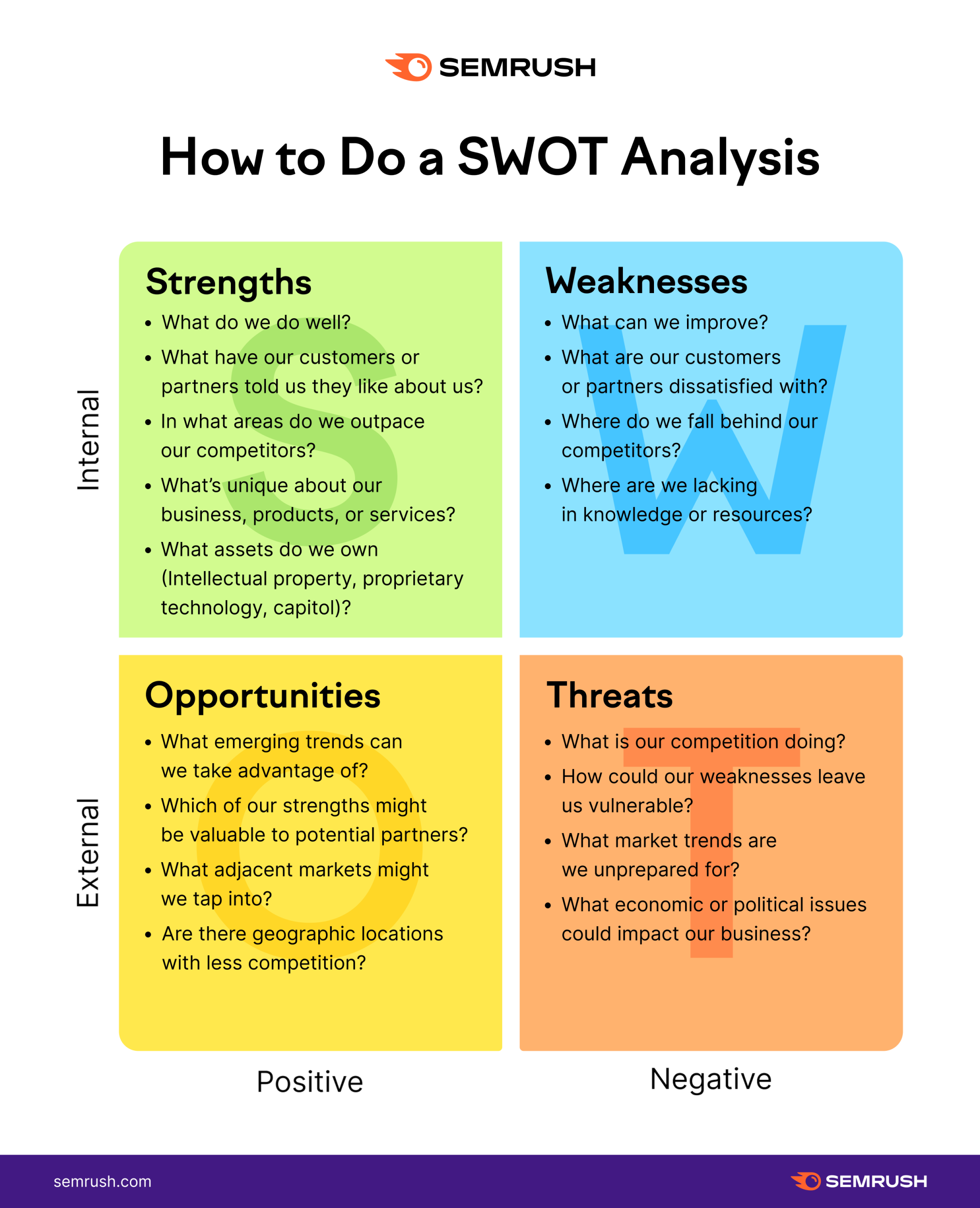
Imagine you're a detective, standing before a complex case. Papers are strewn across your desk, each one a clue about a company's inner workings and the world it navigates. How do you piece it all together? One powerful tool, a method for dissecting a business's strengths, weaknesses, opportunities, and threats, lies in the SWOT analysis.
At its heart, a SWOT analysis is a strategic planning method used to evaluate the Strengths, Weaknesses, Opportunities, and Threats involved in a project or in a business venture. This article will guide you through the steps of creating a comprehensive SWOT analysis that can illuminate the path forward for any organization.
Understanding the Four Pillars
Let’s break down each component, understanding what questions to ask and how to collect the necessary information.
Strengths: What Does the Company Do Well?
Begin by identifying what the company excels at. What are its core competencies? Think about factors like a strong brand reputation, unique technology, skilled workforce, loyal customer base, or efficient operations.
Consider asking questions like: "What advantages does the company have over its competitors?" or "What resources does the company possess that others lack?"
For example, perhaps Tesla's strength is its brand recognition in the electric vehicle market.
Weaknesses: Where Can the Company Improve?
Next, honestly assess the areas where the company falls short. Weaknesses could include outdated technology, high debt, lack of innovation, poor employee morale, or inefficient processes.
Ask: "What areas does the company need to improve?" or "What limitations does the company face?"
Perhaps a weakness of a small local bakery is limited marketing budget compared to a large chain.
Opportunities: What External Factors Can Benefit the Company?
Now, shift your focus to the external environment. What trends or changes could benefit the company? Opportunities might include emerging markets, changing consumer preferences, new technologies, or favorable government regulations.
Consider the question: "What external trends could the company capitalize on?" or "Are there untapped markets the company could explore?"
For example, an opportunity for a renewable energy company could be increased government investment in green technologies.
Threats: What External Factors Could Harm the Company?
Finally, identify potential threats that could negatively impact the company. These might include increasing competition, economic downturns, changing regulations, or disruptive technologies.
Ask: "What external factors could harm the company?" or "What challenges does the company face in the market?"
A threat to a traditional taxi company could be the rise of ride-sharing apps like Uber and Lyft.
Gathering Information and Structuring the Analysis
The quality of your SWOT analysis depends on the accuracy and depth of the information you gather. Use both internal and external sources. Internal sources include company reports, financial statements, employee surveys, and management interviews.
External sources include market research reports, industry publications, competitor analysis, and customer feedback.
Organize your findings in a simple 2x2 matrix. This matrix visually represents the four elements of the SWOT analysis, making it easier to understand and use.
Turning Analysis into Action
A SWOT analysis is not just an academic exercise; it's a tool for strategic decision-making. Once you've completed the analysis, use it to develop strategies that leverage strengths, address weaknesses, capitalize on opportunities, and mitigate threats.
For instance, if a company identifies a strength in its customer service and an opportunity in a growing market, it might develop a strategy to expand its customer base in that market by leveraging its superior service.
Alternatively, if a company identifies a weakness in its technology and a threat from competitors with better technology, it might invest in upgrading its technology to remain competitive.
The Value of a Well-Crafted SWOT
A well-executed SWOT analysis offers a comprehensive and insightful view of a company's position. It helps in making informed decisions, setting realistic goals, and developing effective strategies. From startups to established corporations, the SWOT analysis remains a powerful tool for navigating the complexities of the business world.
It's about understanding not just where you are, but where you could be, and how to get there. Remember, the best detectives are those who meticulously gather the clues, analyze the evidence, and then, with clarity and purpose, chart a course forward.
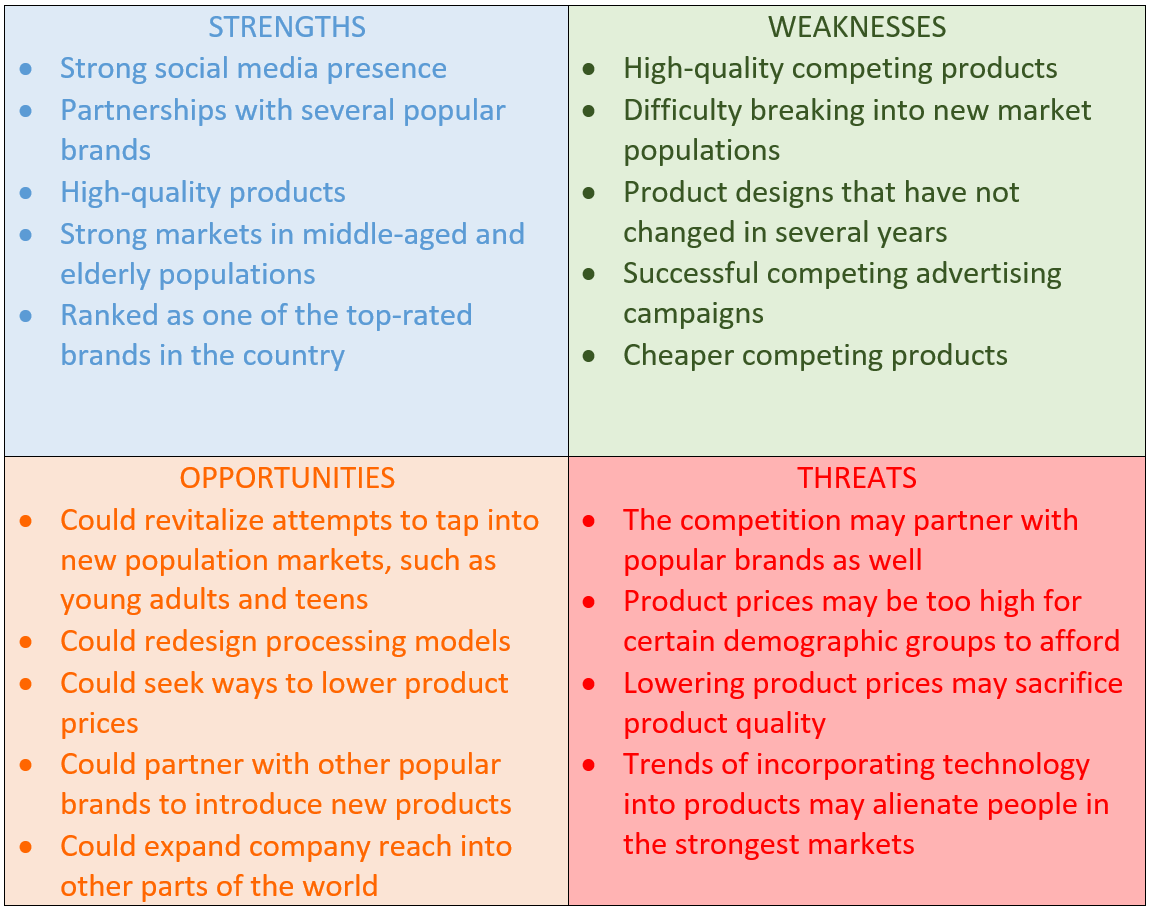
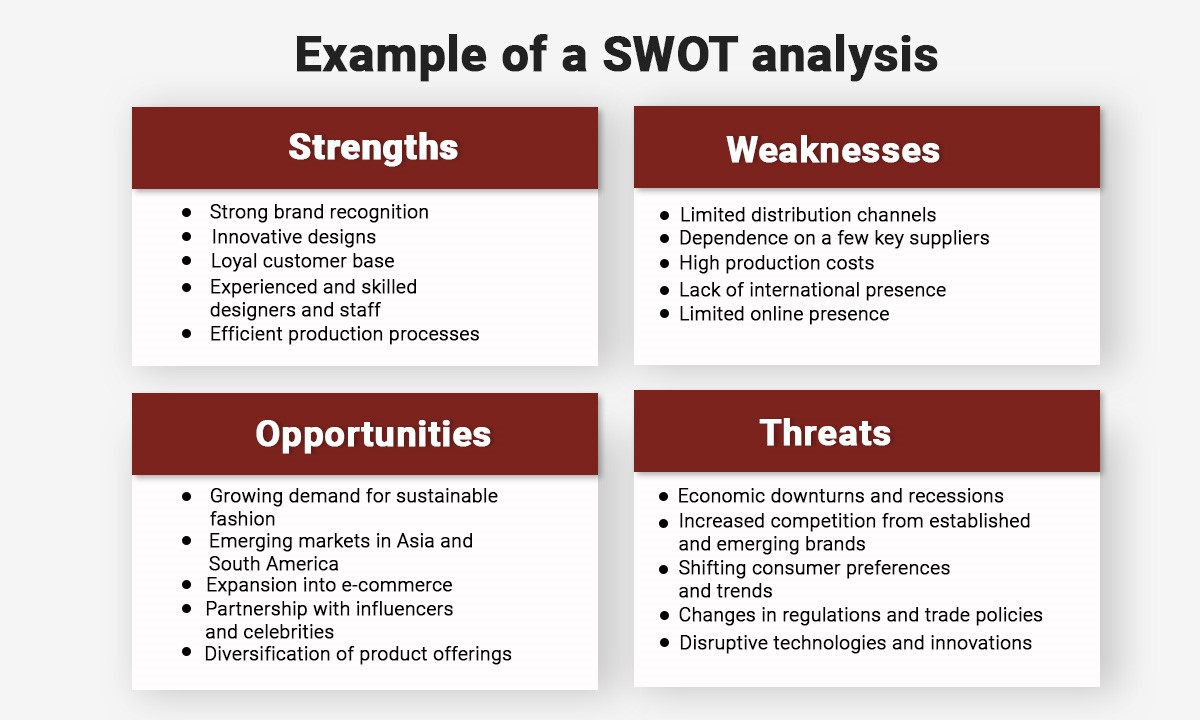

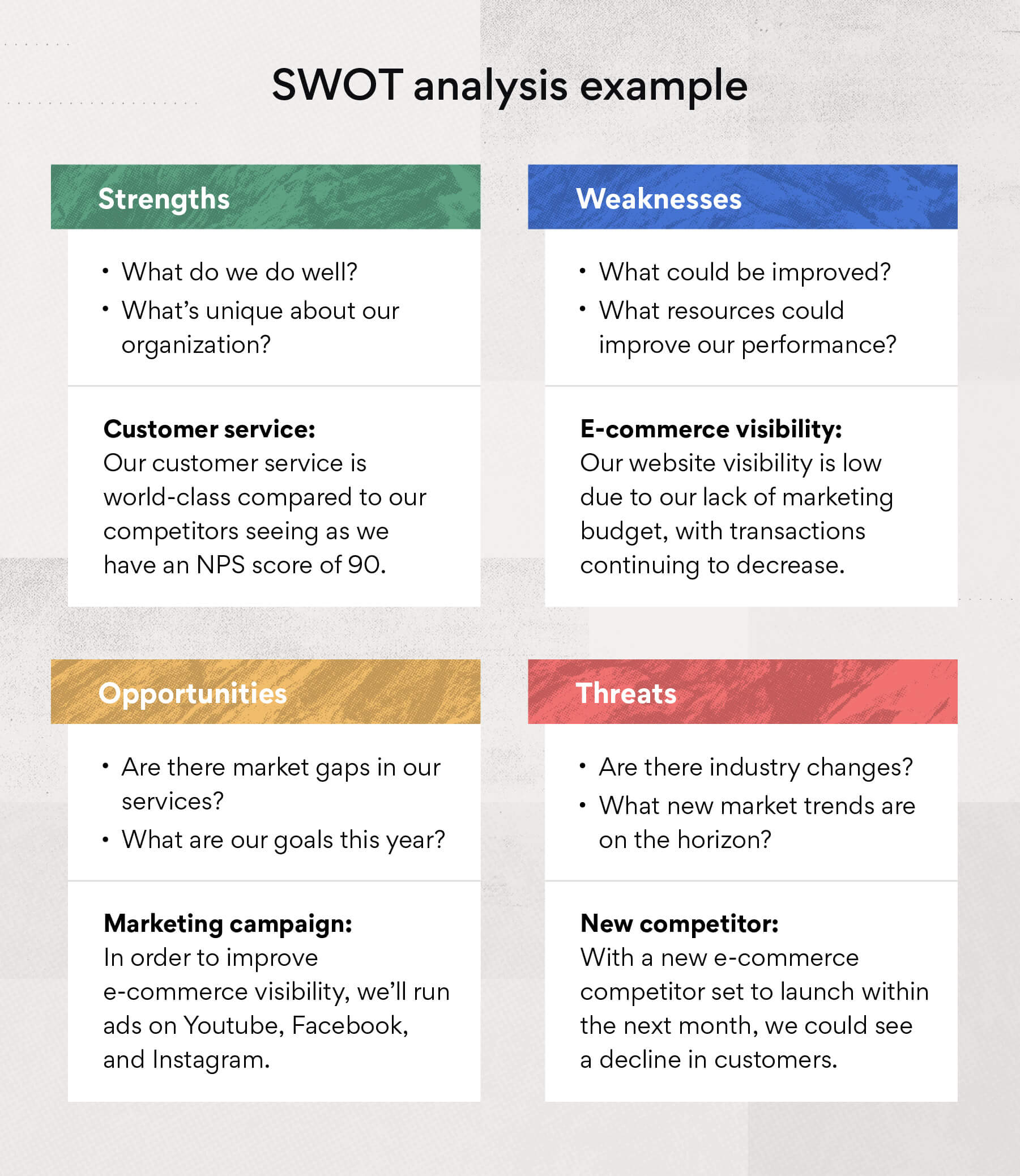

![How To Write Swot Analysis Of A Company SWOT Analysis: How To Do One [With Template & Examples] - Blog](https://blog.hubspot.com/hs-fs/hubfs/swot-analysis-example.jpg?width=3000&height=2000&name=swot-analysis-example.jpg)
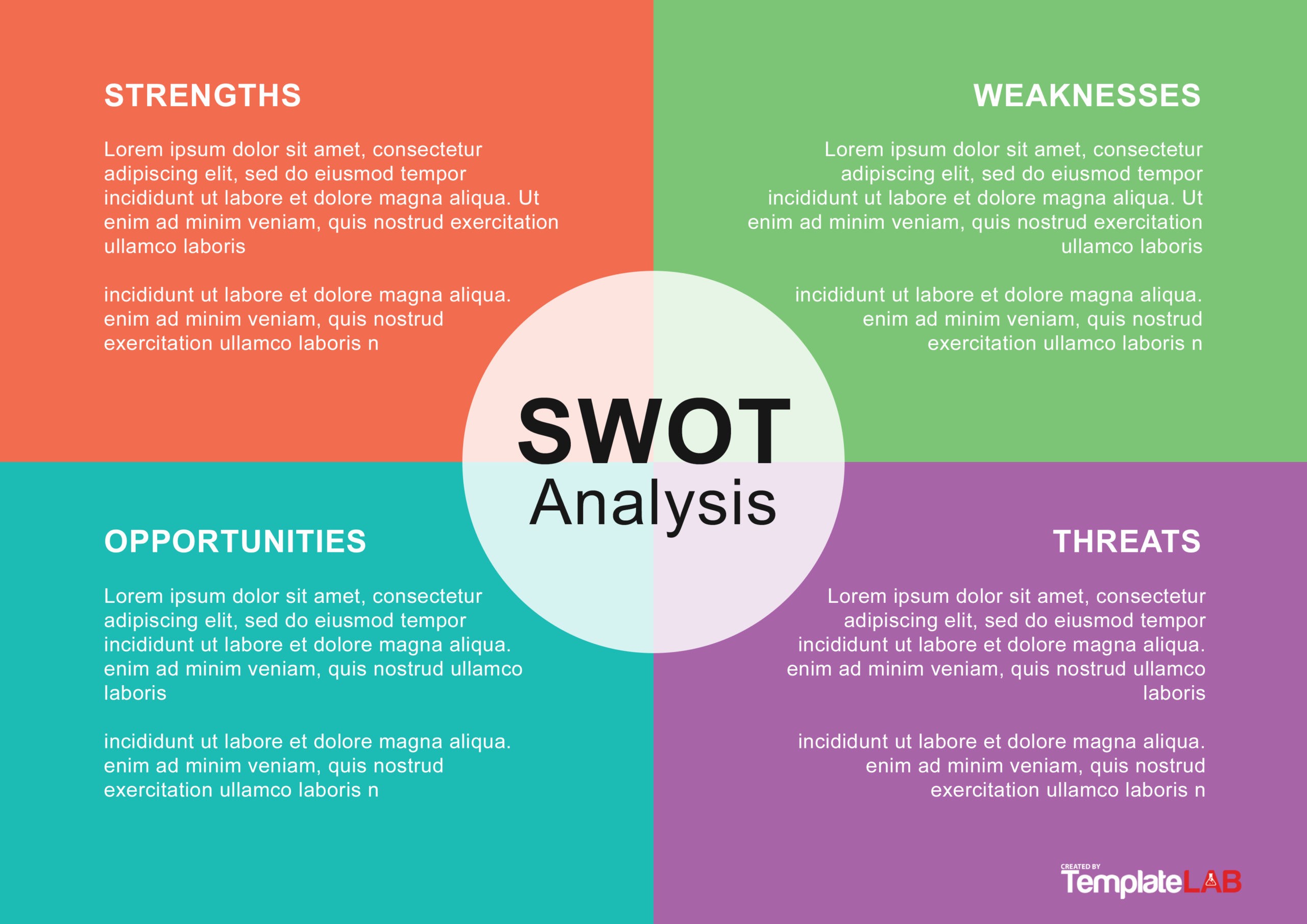
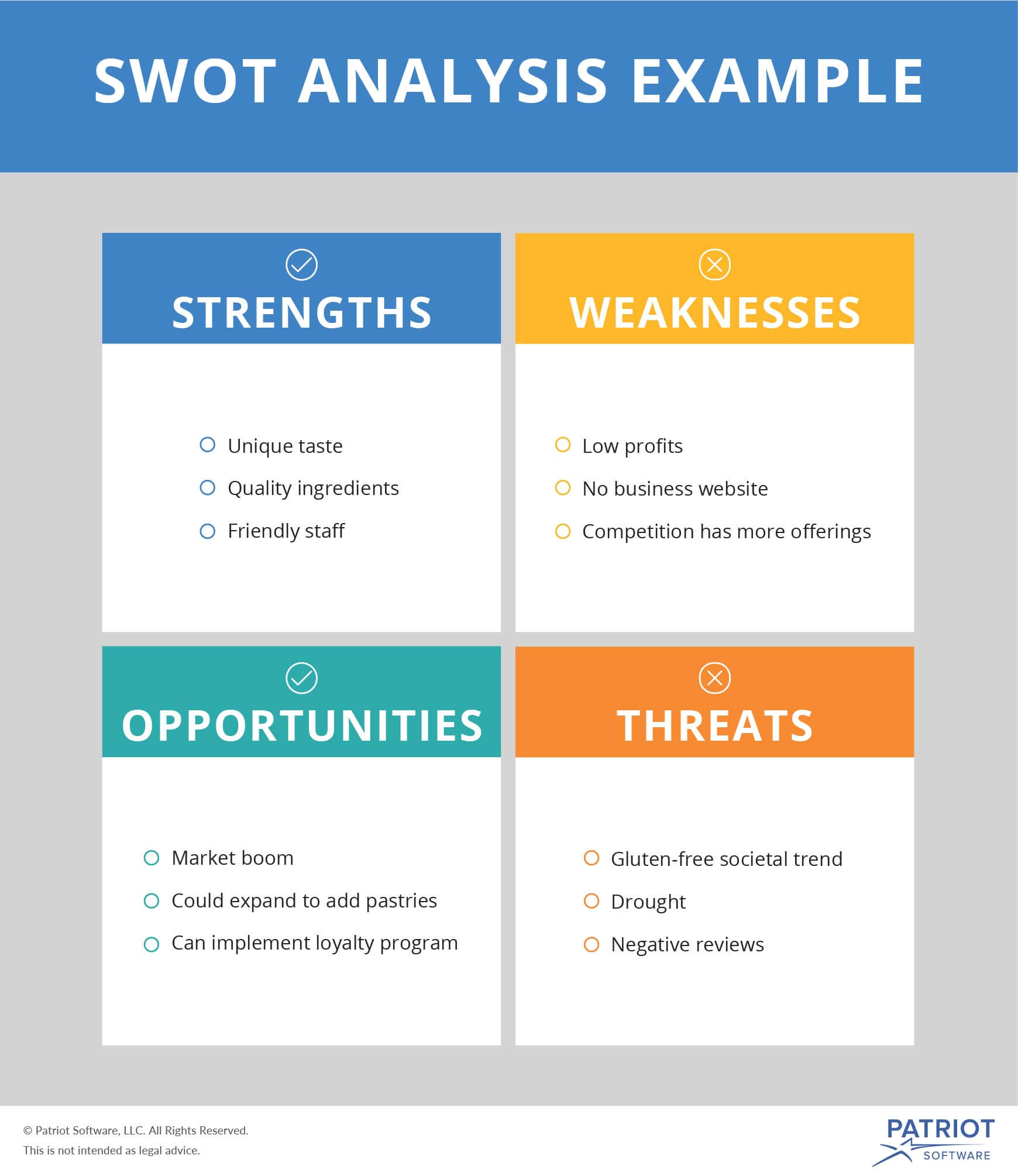
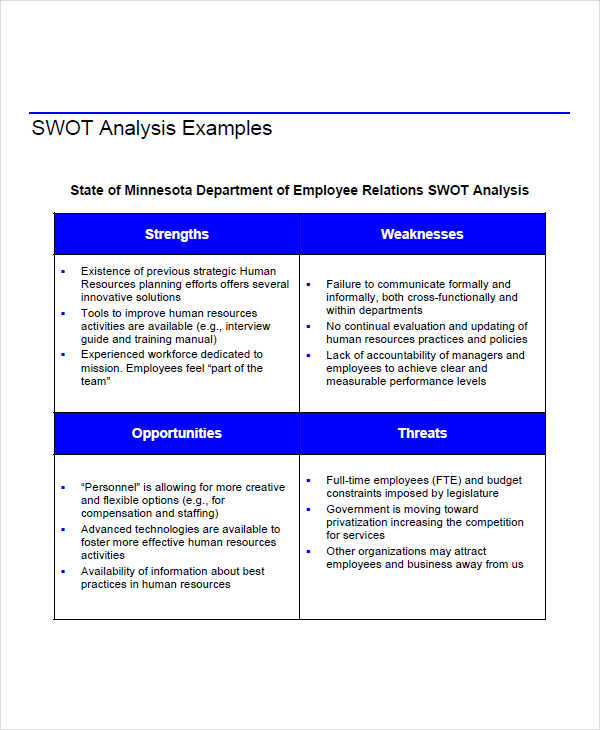


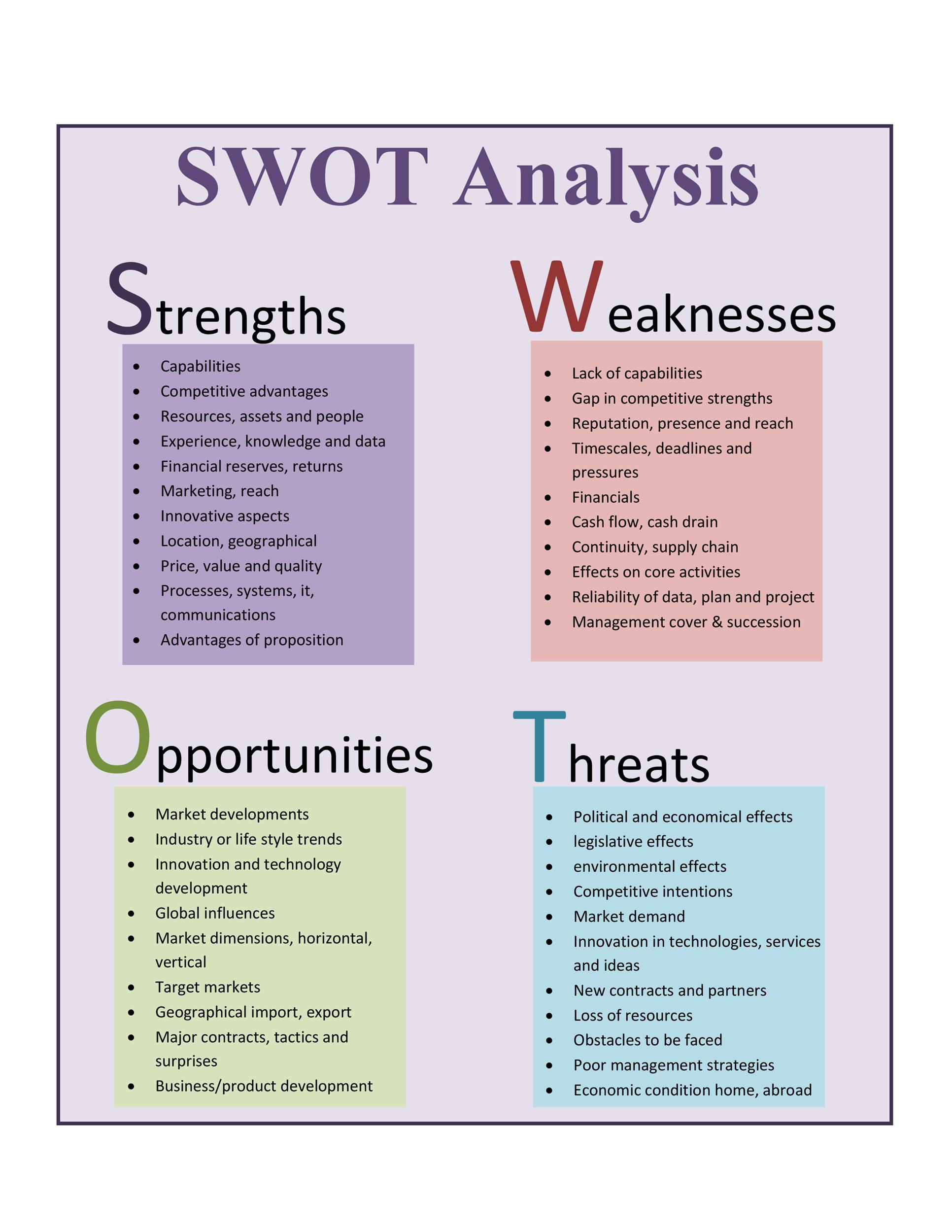
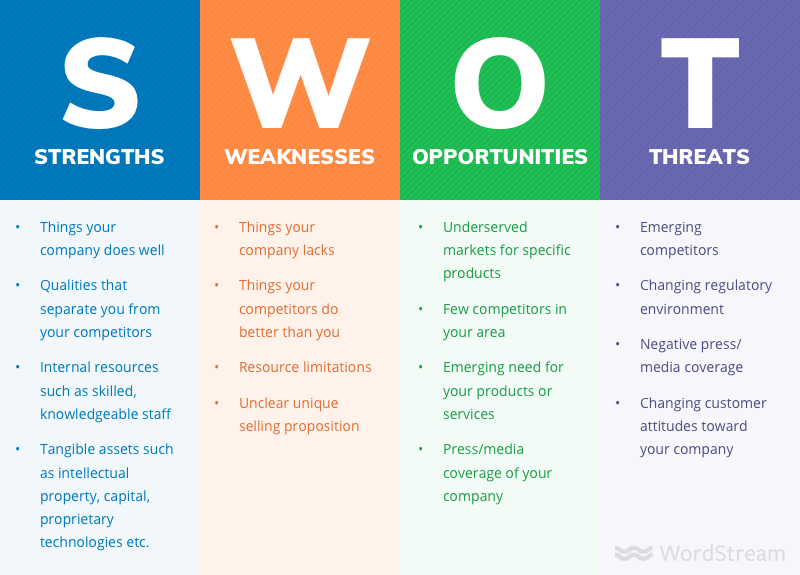
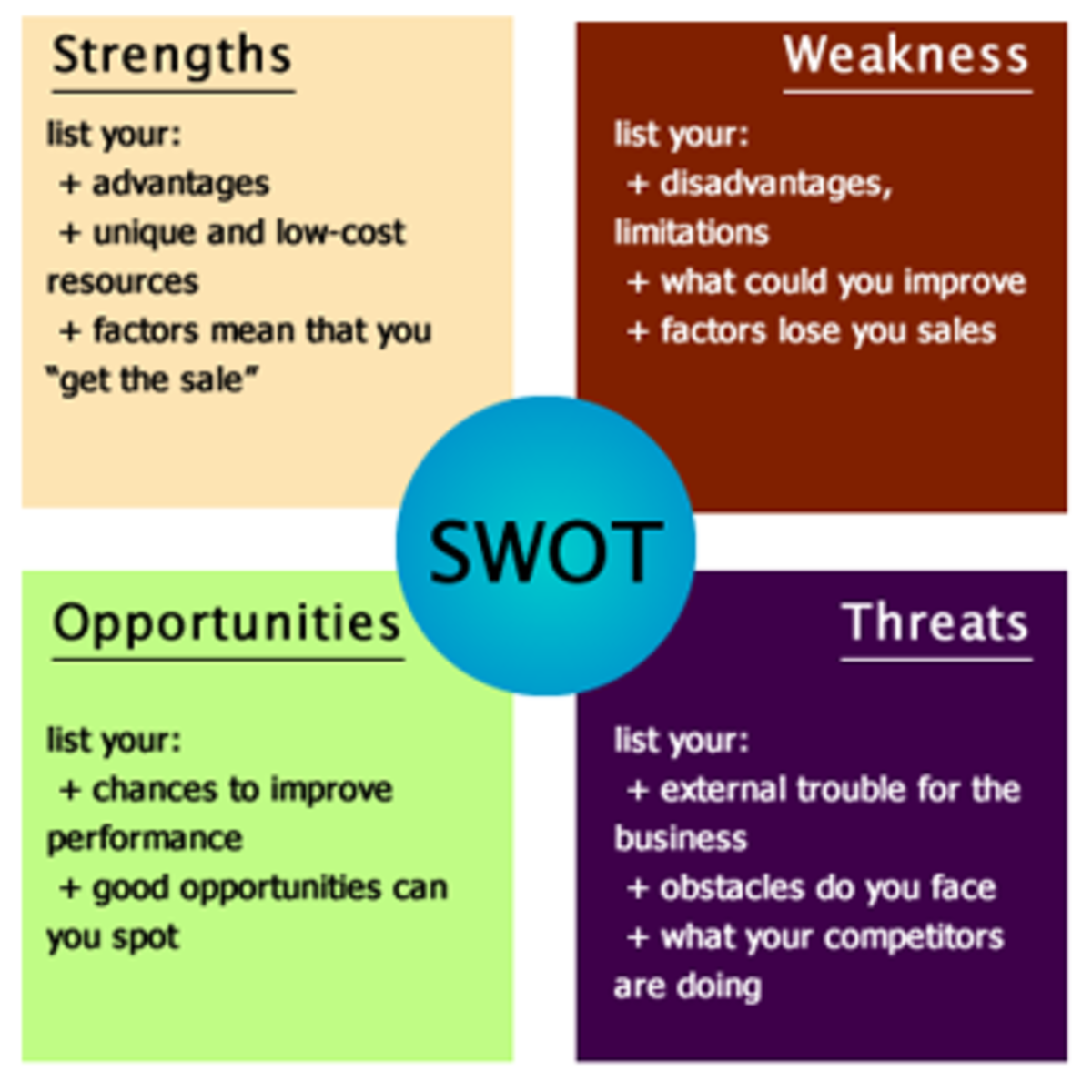

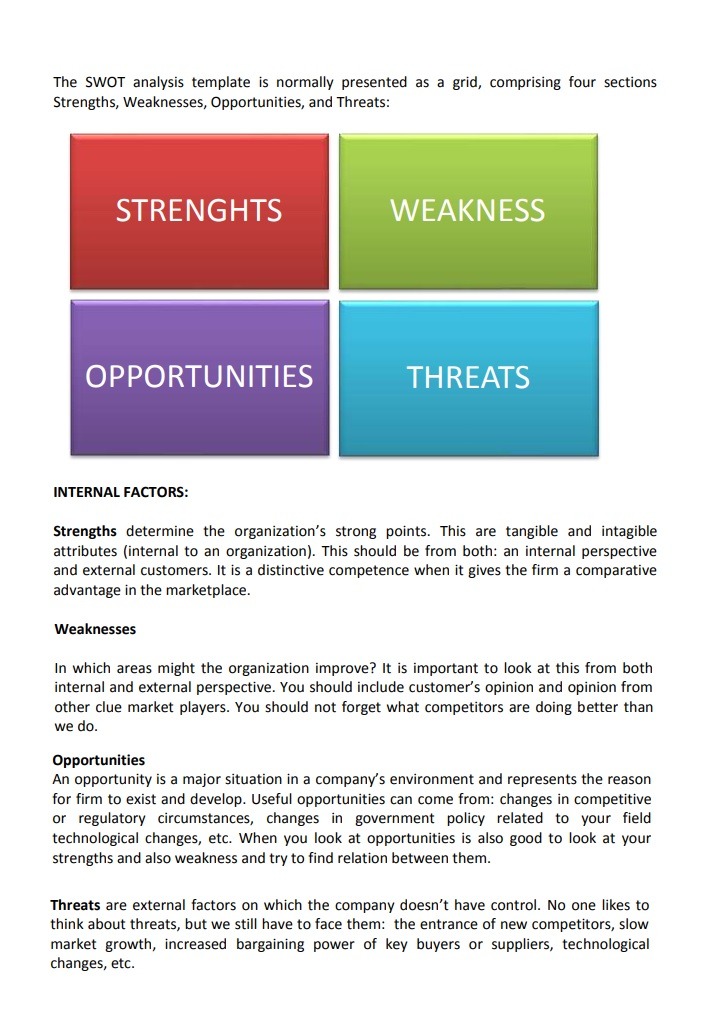
![How To Write Swot Analysis Of A Company SWOT Analysis: How To Do One [With Template & Examples] - Amplitude](https://blog.hubspot.com/hs-fs/hubfs/swot-analysis-Local-Boutique.jpg?width=3000&height=2000&name=swot-analysis-Local-Boutique.jpg)
